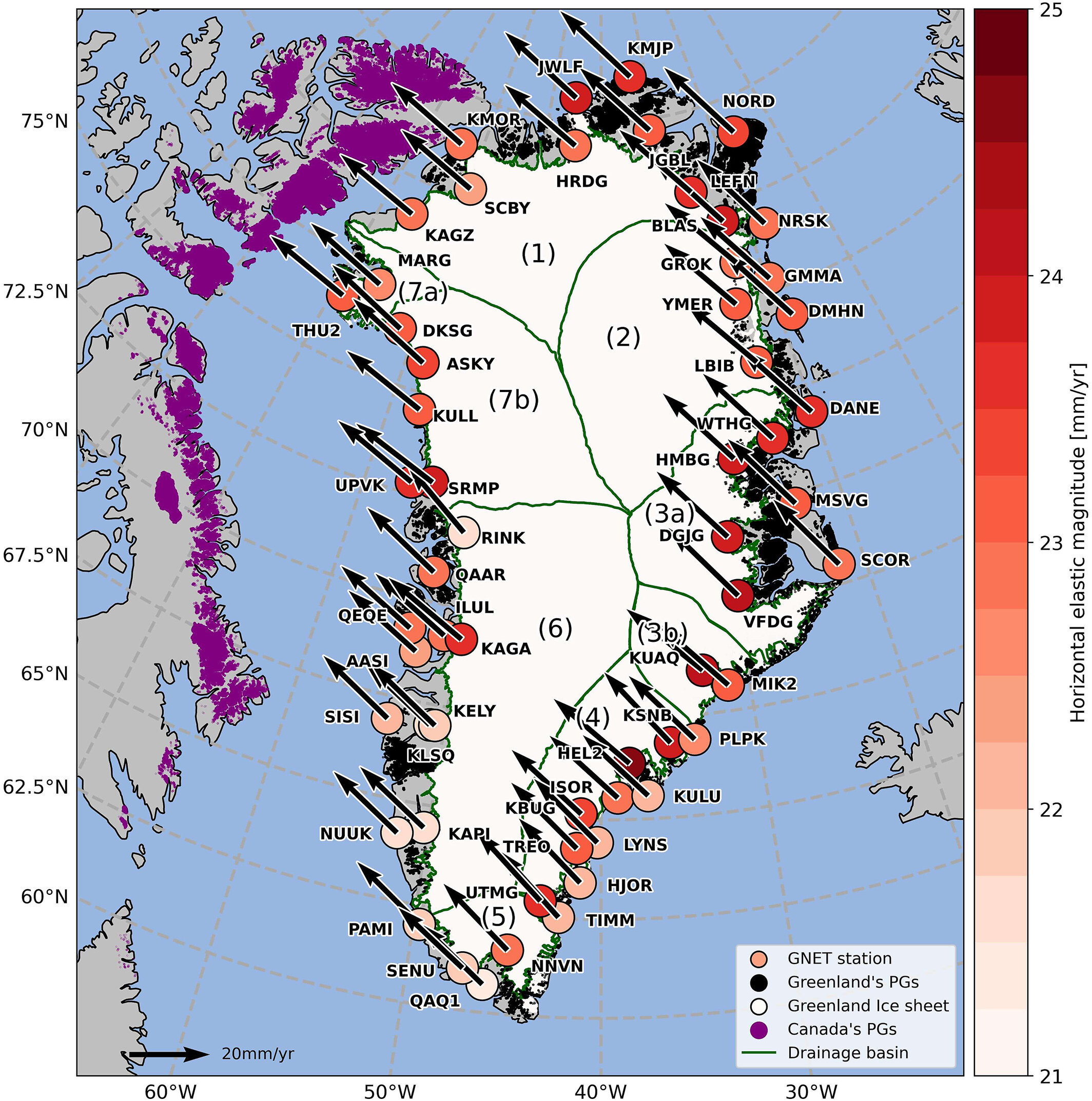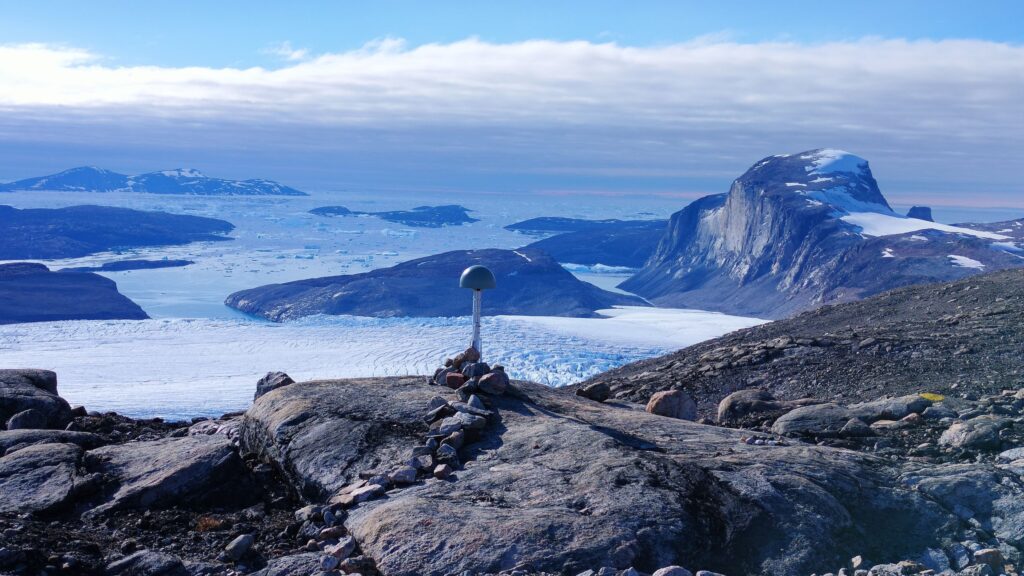Tectonic processes and the “ghosts” of past ice sheets are contorting, lifting and pulling Greenland in different directions, new research reveals.
Greenland sits on the North American tectonic plate, which has dragged the island northwest by 0.9 inches (23 millimeters) per year over the past two decades. Researchers have been monitoring this drift for some time, but a new study analyzing satellite data has found that there is far more to the movement and to other deformations than just plate tectonics.
Berg and his colleagues analyzed data from 58 Global Network Satellite System (GNSS) stations in Greenland that record the island’s horizontal and vertical movements, and nearly 2,900 GNSS stations around the North American plate. The researchers entered these data into a model, and when they removed the effect on Greenland of the North American plate, the researchers were left with bedrock deformations — areas where Earth’s crust has been stretched or crumpled — that didn’t match previous modeling.
In most regions, the movement of landmasses is overwhelmingly controlled by tectonic processes. But Greenland is different, because the island is covered by a giant ice sheet and has a tumultuous glacial past, according to the study, published Aug. 28 in the Journal of Geophysical Research: Solid Earth.
Ice sheets pile enormous weight onto Earth’s crust, pressing it down into the mantle — the layer of the planet that sits beneath the crust. The material displaced in the mantle by the sinking crust is pushed out to the sides, creating what is known as a peripheral forebulge, Berg said.
When an ice sheet retreats, the mantle does not return to its original shape immediately. Due to the mantle’s gooey consistency, it takes thousands of years for material to flow back into the dent created by the loaded crust. In other words, the mantle “has a very long memory,” Berg said.

The mantle beneath and around Greenland is still adjusting to changes in ice cover since the peak of the last ice age about 20,000 years ago, which explains why data show the island deforming. Specifically, it appears that Greenland is reacting to the retreat of the Laurentide Ice Sheet, which covered large swathes of North America until about 8,000 years ago.
The Laurentide Ice Sheet created a peripheral forebulge beneath parts of Greenland. This forebulge is gradually flattening, pulling areas of southern Greenland downward and towards Canada, Berg said. Researchers already knew this, he said, but the new results reveal that the rate of deformation is higher than most modeling suggests.
The Greenland Ice Sheet also plays a role in the island’s twisting motions. Meltwater from the ice sheet has contributed 13.5 feet (4.1 meters) of the 430 feet (130 m) of sea level rise recorded over the past 20,000 years, Berg said. That means Greenland has lost an incredible amount of ice, which in turn has triggered a response in the mantle that is separate from the effect of the Laurentide Ice Sheet, he said.
Melting of the Greenland Ice Sheet has accelerated in recent years due to climate change. Past and present-day declines in ice mass over Greenland have had the same general effect on the island, pushing the bedrock outward and up, Berg said.
The results offer the most detailed picture of Greenland’s movements to date, particularly of how the island is scrunching up in some places, according to a statement. The findings are important because they provide new insights into how polar regions may react to climate change and thereby skew the maps we use for navigation and surveys, Berg said.
“Together with other type[s] of satellite observations it can give new information about the past ice sheets and the structure of the Earth,” he added.
